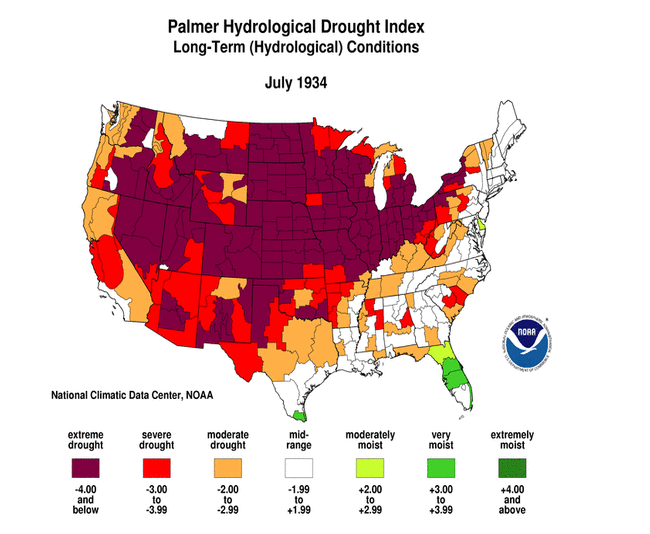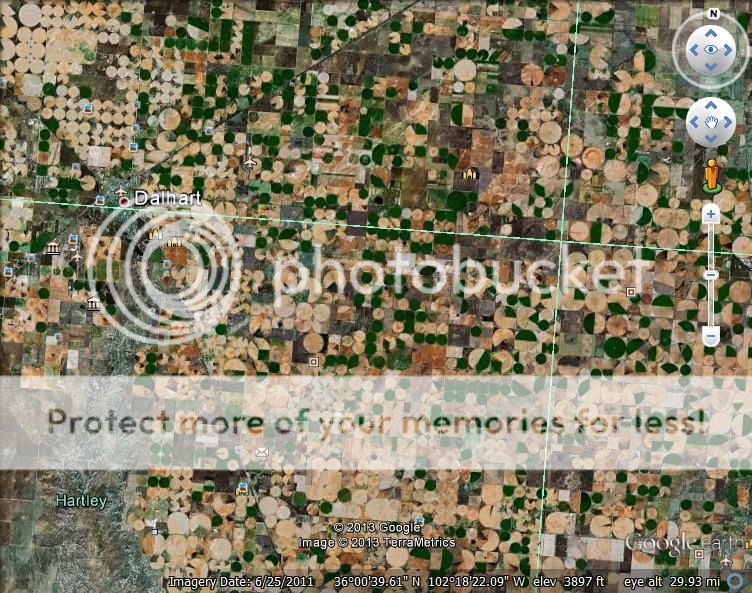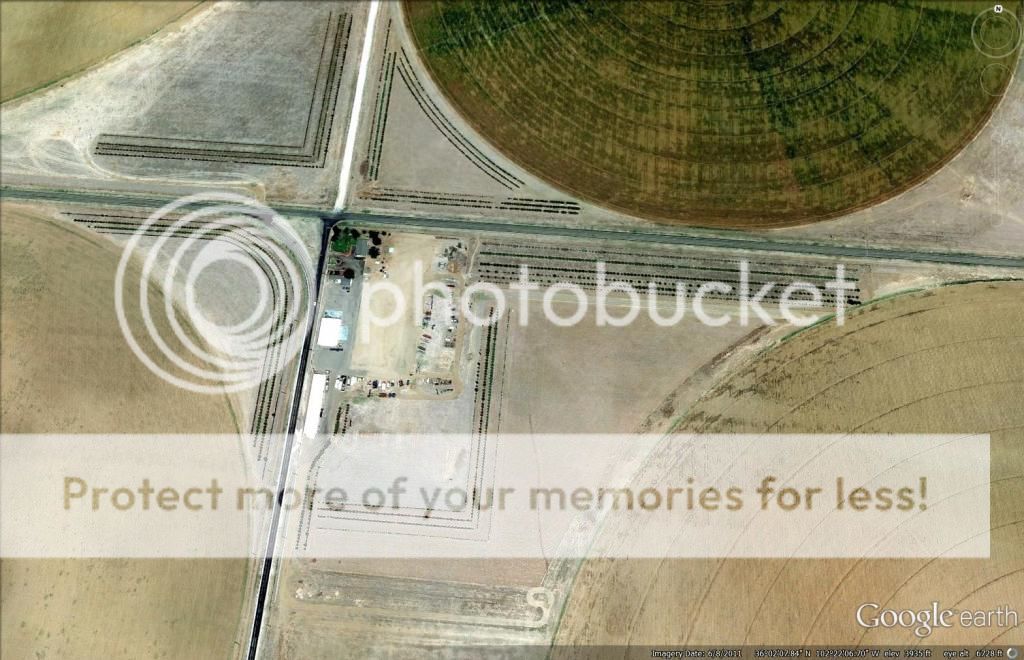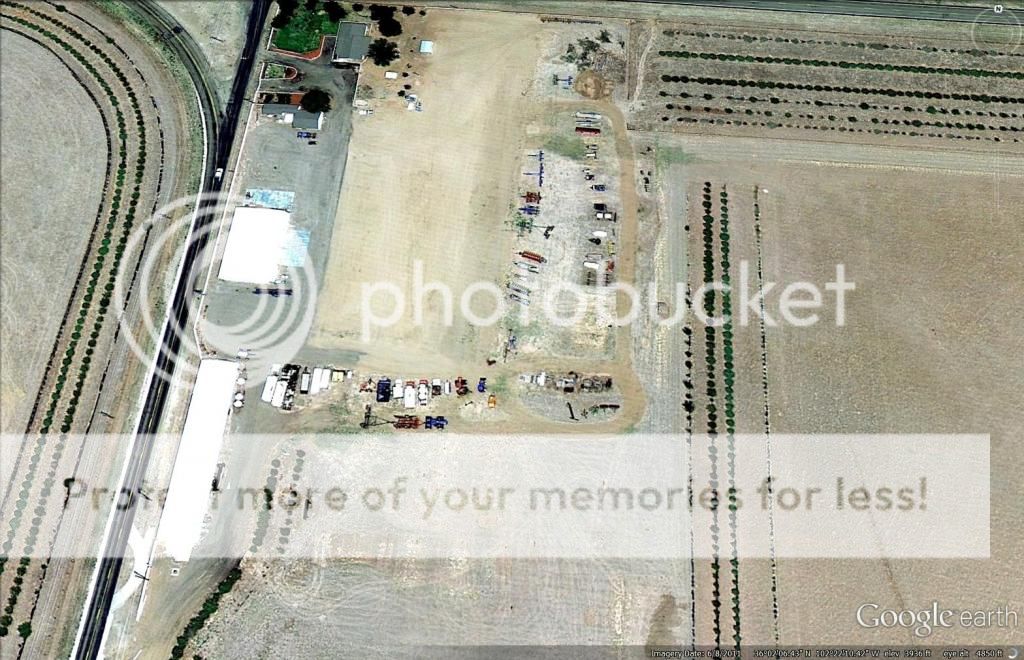crsublette
coyotes call me Charles
Past week or so I have been fighting terrible wind. Here are some pictures.
First picture is an aerial shot of a wind front coming to the area.
The first several attached pictures are me driving a tractor to try to slow down and reduce the volume of dirt blowing. There are many techniques we used to accomplish this by spraying water from a truck, ripping the ground open to create large caverns and clods, and spreading chunks of crude cow manure.
Water essentially forms a thick crust over the powdered dirt to stop it from blowing, but, in very high winds, the wind shear can easily break this crust. Ripping the ground open allows the blowing dirt to become trapped behind the clods and in the caverns, but, when the wind shifts, then the dirt will start to blow again until the process repeats. Chunks of crude cow manure works much like crushed asphalt except manure is much cheaper and better overall; the chunks act as obstacle to trap the dirt, but, when the wind shifts, then the process repeats except it is much easier covering a large area with cow manure rather than ripping the ground.
When we need to slow down and reduce volume of dirt blowing on a field where a crop is, then we use a rotary hoe (which is in the pictures below) or other similar tractor implements depending on the type of crop. These type of tractor implements essentially create dirt clods without damaging nor digging out the plant. Unfortunately, this is a very short term fix that only lasts for about 24 hours or so due to the clods being so small. Once these tractor implements become ineffective, then we have to water the ground and the repeat the process. Also, wind shear can melt these small clods.
The tractor implements described above essentially are trying to save the plant's root crown. Dirt acts like sandpaper that literally burns the plant's leaves and crown. If the plant crown can be save, then there is a significant increased chance that plant will be saved.
The image, "rotaryhoe8", is a close up picture of the rotary hoe.
The other attached pictures below are the tumble weeds or also fondly called a Texas Christmas Tree. These weeds can get huge up to 5 foot tall, which can cause some serious damage. On occasion here, we have fires started and power outages due to a large tumble weed being blown into electrical transformers. Tumbleweeds are chalk full of oils and quickly ignite, and, when caught on fire, the tumbleweeds quickly become air borne. Tumbleweeds can also be caught on fire by gasoline powered cars.
Tumbleweeds are no good except, for a brief period while they're young, they can stop dirt from blowing and these weeds are very easy to grow in any blank ground and require extremely little water to grow. If there is a wall of tumbleweeds on a fence row, then this can make for an excellent wind block and a good obstacle to stop dirt from blowing.
The tumbleweeds get so bad, as shown in image "tumbleweeds4", that they can tear down quite stout barbed wire fence rows and completely block county roads where the county officials have to use a front end loader to pile them up, which these then turn into huge dirt piles due to the blowing dirt.
Enjoy!

First picture is an aerial shot of a wind front coming to the area.
The first several attached pictures are me driving a tractor to try to slow down and reduce the volume of dirt blowing. There are many techniques we used to accomplish this by spraying water from a truck, ripping the ground open to create large caverns and clods, and spreading chunks of crude cow manure.
Water essentially forms a thick crust over the powdered dirt to stop it from blowing, but, in very high winds, the wind shear can easily break this crust. Ripping the ground open allows the blowing dirt to become trapped behind the clods and in the caverns, but, when the wind shifts, then the dirt will start to blow again until the process repeats. Chunks of crude cow manure works much like crushed asphalt except manure is much cheaper and better overall; the chunks act as obstacle to trap the dirt, but, when the wind shifts, then the process repeats except it is much easier covering a large area with cow manure rather than ripping the ground.
When we need to slow down and reduce volume of dirt blowing on a field where a crop is, then we use a rotary hoe (which is in the pictures below) or other similar tractor implements depending on the type of crop. These type of tractor implements essentially create dirt clods without damaging nor digging out the plant. Unfortunately, this is a very short term fix that only lasts for about 24 hours or so due to the clods being so small. Once these tractor implements become ineffective, then we have to water the ground and the repeat the process. Also, wind shear can melt these small clods.
The tractor implements described above essentially are trying to save the plant's root crown. Dirt acts like sandpaper that literally burns the plant's leaves and crown. If the plant crown can be save, then there is a significant increased chance that plant will be saved.
The image, "rotaryhoe8", is a close up picture of the rotary hoe.
The other attached pictures below are the tumble weeds or also fondly called a Texas Christmas Tree. These weeds can get huge up to 5 foot tall, which can cause some serious damage. On occasion here, we have fires started and power outages due to a large tumble weed being blown into electrical transformers. Tumbleweeds are chalk full of oils and quickly ignite, and, when caught on fire, the tumbleweeds quickly become air borne. Tumbleweeds can also be caught on fire by gasoline powered cars.
Tumbleweeds are no good except, for a brief period while they're young, they can stop dirt from blowing and these weeds are very easy to grow in any blank ground and require extremely little water to grow. If there is a wall of tumbleweeds on a fence row, then this can make for an excellent wind block and a good obstacle to stop dirt from blowing.
The tumbleweeds get so bad, as shown in image "tumbleweeds4", that they can tear down quite stout barbed wire fence rows and completely block county roads where the county officials have to use a front end loader to pile them up, which these then turn into huge dirt piles due to the blowing dirt.
Enjoy!

Attachments
-
![rotaryhoe1[1].JPG](/data/attachments/35/35106-65f8f0755e7a7ee02e569c80412ce28a.jpg) rotaryhoe1[1].JPG86.8 KB · Views: 326
rotaryhoe1[1].JPG86.8 KB · Views: 326 -
![rotaryhoe2[1].JPG](/data/attachments/35/35107-217cae752ef171a72c91eec801f5cdbd.jpg) rotaryhoe2[1].JPG90.2 KB · Views: 304
rotaryhoe2[1].JPG90.2 KB · Views: 304 -
![rotaryhoe3[1].JPG](/data/attachments/35/35108-bc3b2671e9f097f453f51b1a51ce3682.jpg) rotaryhoe3[1].JPG116.5 KB · Views: 276
rotaryhoe3[1].JPG116.5 KB · Views: 276 -
![rotaryhoe4[1].JPG](/data/attachments/35/35109-7b79f5537fa3c151169da0a0893c50b3.jpg) rotaryhoe4[1].JPG125.8 KB · Views: 323
rotaryhoe4[1].JPG125.8 KB · Views: 323 -
![rotaryhoe5[1].JPG](/data/attachments/35/35110-48036c8f1b4354a751356e28200eacbc.jpg) rotaryhoe5[1].JPG113.5 KB · Views: 316
rotaryhoe5[1].JPG113.5 KB · Views: 316 -
![rotaryhoe6[1].JPG](/data/attachments/35/35111-5f0a3f38af2b995184042ed19252d870.jpg) rotaryhoe6[1].JPG131.4 KB · Views: 326
rotaryhoe6[1].JPG131.4 KB · Views: 326 -
![rotaryhoe7[1].JPG](/data/attachments/35/35112-d365dacc53a0795bef906b54baef285e.jpg) rotaryhoe7[1].JPG95.9 KB · Views: 330
rotaryhoe7[1].JPG95.9 KB · Views: 330 -
![rotaryhoe8[1].JPG](/data/attachments/35/35113-f4e6f3418d4a8ff5f5971f1cd83f4f7e.jpg) rotaryhoe8[1].JPG183.5 KB · Views: 294
rotaryhoe8[1].JPG183.5 KB · Views: 294 -
![tumbleweeds1[1].JPG](/data/attachments/35/35114-69791710a94d2be640af549c11a69a1e.jpg) tumbleweeds1[1].JPG201.1 KB · Views: 343
tumbleweeds1[1].JPG201.1 KB · Views: 343 -
![tumbleweeds2[1].JPG](/data/attachments/35/35115-4fc948b2a729eed209a18e801d173954.jpg) tumbleweeds2[1].JPG119.7 KB · Views: 294
tumbleweeds2[1].JPG119.7 KB · Views: 294
Last edited:

![tumbleweeds3[1].JPG](/data/attachments/35/35116-6f5406bbed10ba5d43acbea9a43c8d64.jpg)
![tumbleweeds4[1].JPG](/data/attachments/35/35117-9be1df6c675359898088bae0277c9168.jpg)









